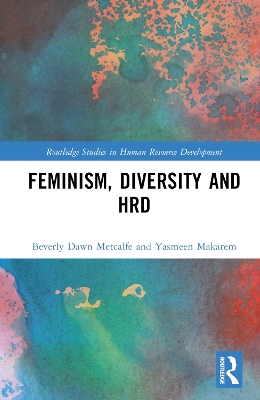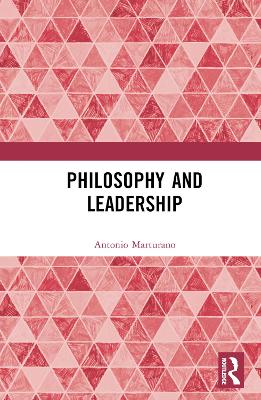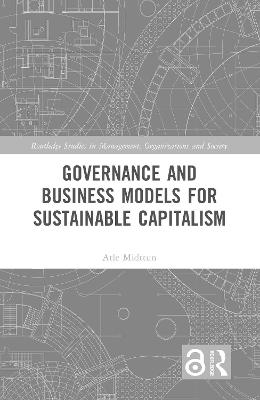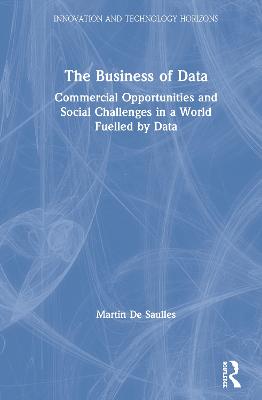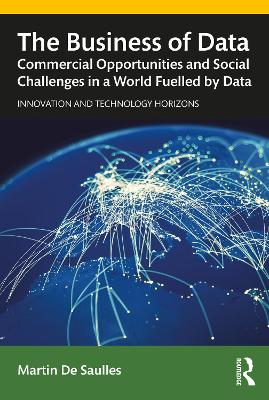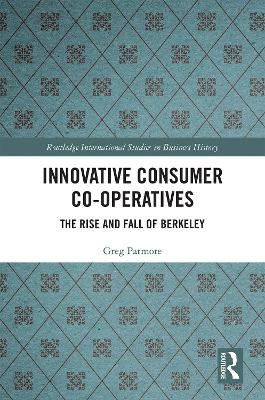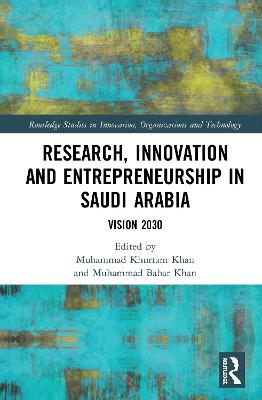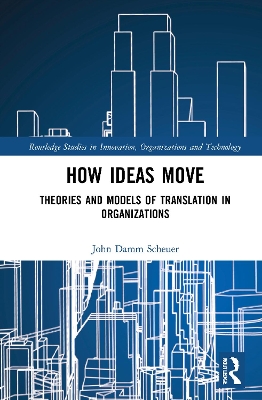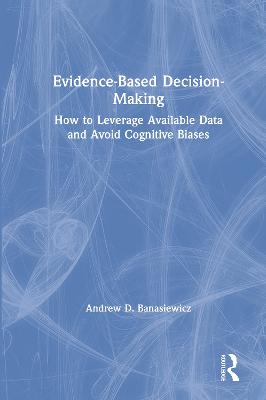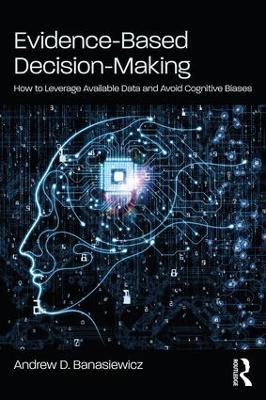Foundations and Practice of Research
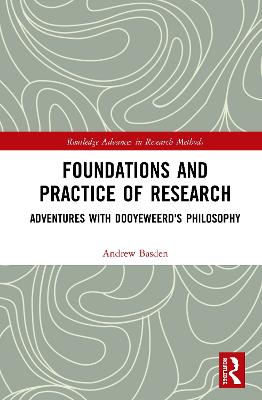 -10%
portes grátis
-10%
portes grátis
Foundations and Practice of Research
Adventures with Dooyeweerd's Philosophy
Basden, Andrew
Taylor & Francis Ltd
10/2019
350
Dura
Inglês
9781138720688
15 a 20 dias
635
List of Figures
Preface
Acknowledgements
Chapter 1. Introduction
1-1. ADVENTURES WITH DOOYEWEERD'S PHILOSOPHY
1-2. RESEARCH
1-2.1 The Mandate of Research
1-2.2 Clarifying Concepts Used in This Book
1-2.3 Some Requirements for Research
1-2.4 Research Content, Activity and Application
1-2.5 Range of Fields
1-3. PRACTICE
1-4. FOUNDATIONS
1-4.1 Foundations of Research
1-4.2 Philosophy
1-4.3 Dooyeweerd and Philosophy
1-4.4 Resources
1-5. GUIDE FOR READERS
1-5.1 The Structure of the Book
1-5.2 Some Tips on Reading
PART I
Chapter 2. Research and Everyday Experience
2-1. SOME PRELIMINARIES
2-1.1 Differences Between Research and Everyday Experience
2-1.2 Relationships Between Research and Everyday Experience
2-2. THE RESEARCHER-WORLD RELATIONSHIPS: DETACHED OR PARTICIPANT OBSERVER?
2-2.1 Is Detached Observer Possible?
2-2.2 Is Detached Observer Desirable?
2-2.3 Dooyeweerd's View of the Researcher-World Relationship
2-3. THE RELATIONSHIP BETWEEN THEORETICAL AND PRE-THEORETICAL THINKING
2-3.1 Is Neutral Theoretical Thinking Desirable?
2-3.2 Is Neutral Theoretical Thinking Possible?
2-3.3 Dooyeweerd's View of Theoretical and Pre-theoretical Thinking
2-4. THE VALUE OF THEORETICAL AND PRE-THEORETICAL KNOWLEDGE
2-5. UNDERSTANDING EVERYDAY, PRE-THEORETICAL EXPERIENCE
2-5.1 Interest in Everyday Experience
2-5.2 Appealing to Everyday Experience
2-5.3 Starting with Everyday Experience
2-6. EVERYDAY EXPERIENCE AND RESEARCH
2-6.1 The Everyday Experience of Applying Research
2-6.2 Research Activity as Everyday Experience
2-6.3 Everyday Experience in Research Content
2-7. CONCLUSIONS
Chapter 3. Diversity and Coherence
3-1. A PHILOSOPHICAL LOOK AT DIVERSITY AND COHERENCE
3-2. DOOYEWEERD'S ASPECTS
3-2.1 An Initial Look At Diversity
3-2.2 Aspects as Modes
3-2.3 Irreducibility of Aspects
3-2.4 Inter-aspect Coherence
3-2.4.1 Aspectual simultaneity
3-2.4.2 No conflict among aspects
3-2.4.3 Inter-aspect analogy
3-2.4.4 Inter-aspect dependency
3-2.4.5 The Order of Aspects
3-3. DIVERSITY AND COHERENCE OF RESEARCH ACTIVITY
3-4. DIVERSITY AND COHERENCE OF RESEARCH APPLICATION
3-5. DIVERSITY AND COHERENCE IN RESEARCH CONTENT (THEORIES)
3-5.1 Diversity and Coherence of Research Fields
3-5.2 Diversity and Coherence of Data Collected in Research
3-5.3 Diversity and Coherence Within Concepts
3-5.4 Diversity and Coherence in Research Findings / Theories
3-6. CONCLUSION
Chapter 4. Meaning in Research and Reality, and an Overview of Dooyeweerd's Understanding of Reality
4-1. PRELIMINARIES
4-2. TREATMENT OF MEANING IN PHILOSOPHY
4-3. MEANINGFULNESS AS THE FOUNDATION FOR ONTOLOGY, EPISTEMOLOGY AND AXIOLOGY
4-3.1 Diversity and Coherence of Meaning
4-3.2 Aspects: Spheres of Meaningfulness
4-3.3 Meaningfulness as the Ground of Being
4-3.4 Types and Identity
4-3.5 Structural Relationships
4-3.6 Meaning and Rationality
4-3.7 Meaning, Value and Good
4-3.8 Law, Functioning and Repercussion
4-3.8.1 Law: the possibility of functioning and repercussion
4-3.8.2 Multi-aspectual functioning
4-3.8.3 Society, progress and meaningfulness
4-3.8.4 Meaningful properties and functional relationships
4-3.9 Subject and Object in Terms of Meaningfulness and Law
4-3.10 Prior Meaningfulness and the Metaphor of Ocean
4-3.11 Towards a Model of Meaning
4-3.11.1 The proposed model
4-3.11.2 Application to philosophy
4-3.12 Meaningfulness and Knowing the World
4-3.13 Knowing Meaningfulness Itself: Delineating the Aspects
4-3.14 Meaning, Time and Self
4-4. POTENTIAL RELEVANCE FOR RESEARCH
4-4.1 Meaningfulness and Research Application
4-4.2. Meaningfulness and Research Activity
4-4.3 Meaning and Research Content
4-5. CONCLUSION
Chapter 5. Research and Philosophy
5-1. ROLES OF PHILOSOPHY IN RESEARCH
5-1.1 Ontology, Epistemology and Axiology
5-1.2 Philosophy as Approach
5-1.3 Philosophy as Foundation
5-1.4 Philosophy as Source of Conceptual Tools and Methods
5-2. LEVELS OF PRESUPPOSITION
5-2.1 Worldviews
5-2.2 Ground-motives
5-2.3 Ground-motives as Presuppositions not Truths
5-2.4 Differences Between Dialectical and Pluralist Ground-motives
5-3. STANDPOINTS
5-3.1 Problems Resulting from the Immanence Standpoint
5-3.2 Alternative Standpoints
5-3.3 Towards a Different Standpoint
5-4. THE DEVELOPMENT OF DOOYEWEERD'S PHILOSOPHY
5-4.1 Struggles with the Immanence Standpoint
5-4.2 Seeking a "Christian" Philosophy
5-4.3 Fresh Insights for Research
5-5. CROSSING RESEARCH PHILOSOPHY BOUNDARIES
5-6. CONCLUSION
PART II
Chapter 6. On Theoretical Knowledge and Research
6-1. THE CHALLENGE OF TRUTH
6-1.1 Realism and Anti-Realism: Is There Generic Truth?
6-1.2 About Truth
6-1.3 Dooyeweerd's Critique of Truth
6-2. ON THE NON-NEUTRALITY OF THEORETICAL THOUGHT
6-2.1 Dooyeweerd's Immanent Critique of Theoretical Thought
6-2.2 Dooyeweerd's Transcendental Critiques of Theoretical Thought
6-3. DOOYEWEERD'S SECOND TRANSCENDENTAL CRITIQUE OF THEORETICAL THOUGHT
6-3.1 Preparing to Understand the Transcendental Problems
6-3.2 The Starting Question
6-3.3 First Transcendental Problem (TP1), Abstraction: Thinker and Diversity of World
6-3.4 Second Transcendental Problem (TP2), Reuniting That Which Was Set Asunder: Rationalities and Responsibility
6-3.5 Third Transcendental Problem (TP3), Grounds of Critical Self-Reflection: Origin of Meaning
6-3.6 Ground-motives as Origins of Meaning
6-3.7 Summary
6-4. DOOYEWEERD'S PERSPECTIVE ON TRUTH
6-5. CONCLUSION
Chapter 7. Ground-Ideas: How Philosophies Work
7-1. DOOYEWEERD'S NOTION OF THREE-PART GROUND-IDEA
7-1.1 Ground-Ideas of Philosophy: A Tool for LACE
7-1.2 Diversity of World
7-1.2.1 Data from the world
7-1.2.2 On sources of data
7-1.2.3 Secondary data and use of instruments
7-1.3 Coherence of Rationalities
7-1.4 Wider Meaningfulness and Origin of Meaning
7-1.5 Ground-Idea Analysis: Example from Sociolinguistics
7-1.6 Reflection
7-2. ON PROGRESS AND ADVANCE IN KNOWLEDGE
7-2.1 Clarification Offered by the Notion of Ground-Idea
7-2.2 Accounts of Dialectic
7-3. GROUND-IDEAS A BASIS FOR DIALOGUE
7-3.1 An Example: Positivist, Interpretivist and Socio-critical Approaches
7-3.2 Reflection
7-4. APPLICATIONS OF GROUND-IDEAS IN RESEARCH PROJECTS
7-4.1 Ground-Ideas as Research Philosophy
7-4.2 On Bias in Research
7-5. CONCLUSION
Chapter 8. Fields of Research
8-1. UNDERSTANDING RESEARCH FIELDS AND DISCIPLINES
8-1.1 Some Approaches
8-1.2 Fields as Centred on Aspects
8-1.3 Secondary Aspects
8-1.4 Wider Meaningfulness: Applications and Interdisciplinary Research
8-1.5 Conclusions About Fields
8-2. ON PARADIGMS
8-2.1 The Idea of Paradigm
8-2.2 A Dooyeweerdian View: Paradigms as Meaningfulness
8-2.3 An Example: Linguistics and Sociolinguistics
8-3. CONCEPTS AND IDEAS IN A FIELD
8-4. CONCLUSION
PART III
Chapter 9. Dooyeweerd's Suite of Aspects
9-1. DESCRIPTION OF EACH ASPECT
9-1.1 The Quantitative Aspect
9-1.2 The Spatial Aspect
9-1.3 The Kinematic Aspect
9-1.4 The Physical Aspect
9-1.5 The Organic / Biotic Aspect
9-1.6 The Psychic / Sensitive Aspect
9-1.7 The Analytical Aspect
9-1.8 The Formative Aspect
9-1.9 The Lingual Aspect
9-1.10 The Social Aspect
9-1.11 The Economic Aspect
9-1.12 The Aesthetic Aspect
9-1.13 The Juridical Aspect
9-1.14 The Ethical Aspect
9-1.15 The Pistic Aspect
9-2. GROUPING THE ASPECTS?
9-3. COMPARISON WITH OTHER SUITES
9-4. ON TRUSTING DOOYEWEERD'S SUITE
9-5. CONCLUSION
Chapter 10. The Complex Activity of Research
10-1. OVERALL APPROACH: "LACE"
10-1.1 The Elements of LACE
10-1.2 Example of LACE with Information Systems Approaches
10-1.3 Examples of LACE with Foundations of Information Systems
10-2. RESEARCH AS MULTI-ASPECTUAL FUNCTIONING
10-3. THE MORE VISIBLE ASPECTS OF RESEARCH ACTIVITY
10-4. SOME LESS-OBVIOUS ASPECTS OF RESEARCH ACTIVITY
10-4.1 Less-obvious Pistic Functioning in Research
10-4.2 Less-obvious Ethical Aspects in the Activity of Research
10-4.3 Less-obvious Juridical Functioning in Research
10-4.4 Less-obvious Aesthetic Functioning in the Activity of Research
10-4.5 Less-obvious Economic Functioning in Research
10-4.6 Less-obvious Social Functioning in Research
10-4.7 Less-obvious Lingual, Formative and Analytic Functioning in Research
10-4.8 The Early Aspectual Functioning in Research
10-5. A CASE STUDY: ACTIVITIES IN A KNOWLEDGE PROJECT
10-6. CONCLUSIONS
CHAPTER 11. Experience of Research Using Dooyeweerd
11-1. STAGES OF RESEARCH USING DOOYEWEERD
11-2. UNDERSTANDING THE DISCOURSES AND LITERATURE OF A FIELD WITH DOOYEWEERD
11-2.1 Methods Involving Ground-motives
11-2.2 Joneidy's Analysis of Seminal Papers
11-2.3 Understanding Collections of Papers
11-2.4 More Complex Inter-Discourse Analysis
11-2.4.1 Breems' study
11-2.4.2 Basden's study
11-2.4.3 Reflection on heatmaps
11-3. CONCEPTUAL FRAMEWORKS: DOOYEWEERDIAN ADVENTURES AMONG PARADIGMS
11-3.1 Critique of Paradigms in Statistics
11-3.2 Paradigms and Frameworks in Systems Thinking
11-3.3 A Multi-aspectual Paradigm in Sustainability
11-3.4 A New Paradigm of the State and Civil Society
11-3.5 New Paradigm in Knowledge Management and Tacit Knowledge
11-3.6 New Paradigms and Frameworks in the Information Systems Field
11-3.6.1 ISD: Information systems development, including programming
11-3.6.2 IT features
11-3.6.3 IT/IS use
11-3.6.4 IT and society
11-3.6.5 Nature of information and computers
11-3.7 Broadening Paradigms in Engineering
11-3.8 Reflection
11-4. CONCEPTUAL FRAMEWORKS: CLARIFYING CONCEPTS AND IDEAS
11-4.1 Understanding a 'Simple' Concept: Diagrams
11-4.2 Exploring a More Complex Concept: Idolatry
11-4.3 Multi-aspectual Concepts: Information, Documents
11-4.4 Complex Notions Inforporating Antecipations and Retrocipations
11-4.5 Contributing Ideas to Philosophy
11-5. USING DOOYEWEERD TO DISCUSS RESEARCH METHODS
11-6. DATA COLLECTION WITH DOOYEWEERD
11-6.1 Using Aspects to Design Questionnaires
11-6.2 MAKE: Multi-aspectual Knowledge Elicitation
11-6.3 MAIT: Multi-aspectual Interview Technique
11-6.4 Practical Reflections on MAKE and MAIT
11-6.5 Philosophical Reflections on MAKE and MAIT
11-6.6 Eliciting Detailed Expertise
11-7. USING DOOYEWEERD IN DATA ANALYSIS
11-7.1 Simple Aspectual Analysis
11-7.2 Finding Hidden Meanings: What Motivated Seminal Papers
11-7.2.1 The method
11-7.2.2 Results
11-7.2.3 Challenges
11-7.3 Researching Everyday Down-to-earth Issues
11-7.3.1 The first study
11-7.3.2 The second and third studies
11-7.3.3 Quantitative and qualitative analyses
11-7.3.4 Comparative analyses
11-7.3.5 The value of extra, volunteered information
11-7.3.6 The literature versus everyday experience
11-7.3.7 Reflection on aspectual analysis of down-to-earth issues
11-7.4 Complex Quantitative Comparisons
11-7.5 Complex Qualitative Comparisons
11-7.6 Overview
11-8. EXTENDING THESE IDEAS: NEW ADVENTURES AWAITED
11-8.1 Using Dooyeweerd at Beginning and End of Research
11-8.2 Using Dooyeweerd in Observation
11-8.3 Using Dooyeweerd in Natural and Mathematical Sciences
11-9. CONCLUSION
PART IV
CHAPTER 12. Criticisms of Dooyeweerd
12-1. CRITICISMS OF DOOYEWEERD'S IDEAS
12-1.1 Critiques of Dooyeweerd's Approach to Everyday Experience
12-1.2 Critiques of Dooyeweerd's View of Non-Neutrality or Non-Autonomy of Theoretical Thought
12-1.3 Critiques of Dooyeweerd's Approach to Diversity and Coherence
12-1.4 Critiques of Dooyeweerd's Idea of Meaning(fulness)
12-1.5 Critiques of Dooyeweerd's Notion of Being as Meaningfulness
12-1.6 Critiques of Dooyeweerd's idea of Good and Evil
12-1.7 Critiques of Dooyeweerd's idea of Aspectual Functioning
12-1.8 Critiques of Dooyeweerd's View of History and Progress
12-1.9 Critiques of Dooyeweerd's View of Ground-motives
12-1.10 Critiques of Dooyeweerd's Idea of the Immanence Standpoint
12-1.11 Critiques of Dooyeweerd's Transcendental Critiques of Theoretical Thought
12-1.12 Critiques of Dooyeweerd's idea of Antithesis between Christian and Non-Christian Thought
12-1.13 Critiques of Dooyeweerd's Aspects
12-2. REFLECTION
Chapter 13. Summary and Conclusions
13-1. SUMMARY OF CONTRIBUTIONS TO RESEARCH
13-1.1 Overall Benefits
13-1.2 Contributions to Research Content
13-1.3 Contributions to Research Activity
13-1.4 Contributions to Research Application
13-2. THE CHANGING WORLD OF RESEARCH
13-3. COVERAGE OF DOOYEWEERD'S PHILOSOPHY
13-4. THE ADVENTURE IS JUST BEGINNING
References
Index
List of Figures
Preface
Acknowledgements
Chapter 1. Introduction
1-1. ADVENTURES WITH DOOYEWEERD'S PHILOSOPHY
1-2. RESEARCH
1-2.1 The Mandate of Research
1-2.2 Clarifying Concepts Used in This Book
1-2.3 Some Requirements for Research
1-2.4 Research Content, Activity and Application
1-2.5 Range of Fields
1-3. PRACTICE
1-4. FOUNDATIONS
1-4.1 Foundations of Research
1-4.2 Philosophy
1-4.3 Dooyeweerd and Philosophy
1-4.4 Resources
1-5. GUIDE FOR READERS
1-5.1 The Structure of the Book
1-5.2 Some Tips on Reading
PART I
Chapter 2. Research and Everyday Experience
2-1. SOME PRELIMINARIES
2-1.1 Differences Between Research and Everyday Experience
2-1.2 Relationships Between Research and Everyday Experience
2-2. THE RESEARCHER-WORLD RELATIONSHIPS: DETACHED OR PARTICIPANT OBSERVER?
2-2.1 Is Detached Observer Possible?
2-2.2 Is Detached Observer Desirable?
2-2.3 Dooyeweerd's View of the Researcher-World Relationship
2-3. THE RELATIONSHIP BETWEEN THEORETICAL AND PRE-THEORETICAL THINKING
2-3.1 Is Neutral Theoretical Thinking Desirable?
2-3.2 Is Neutral Theoretical Thinking Possible?
2-3.3 Dooyeweerd's View of Theoretical and Pre-theoretical Thinking
2-4. THE VALUE OF THEORETICAL AND PRE-THEORETICAL KNOWLEDGE
2-5. UNDERSTANDING EVERYDAY, PRE-THEORETICAL EXPERIENCE
2-5.1 Interest in Everyday Experience
2-5.2 Appealing to Everyday Experience
2-5.3 Starting with Everyday Experience
2-6. EVERYDAY EXPERIENCE AND RESEARCH
2-6.1 The Everyday Experience of Applying Research
2-6.2 Research Activity as Everyday Experience
2-6.3 Everyday Experience in Research Content
2-7. CONCLUSIONS
Chapter 3. Diversity and Coherence
3-1. A PHILOSOPHICAL LOOK AT DIVERSITY AND COHERENCE
3-2. DOOYEWEERD'S ASPECTS
3-2.1 An Initial Look At Diversity
3-2.2 Aspects as Modes
3-2.3 Irreducibility of Aspects
3-2.4 Inter-aspect Coherence
3-2.4.1 Aspectual simultaneity
3-2.4.2 No conflict among aspects
3-2.4.3 Inter-aspect analogy
3-2.4.4 Inter-aspect dependency
3-2.4.5 The Order of Aspects
3-3. DIVERSITY AND COHERENCE OF RESEARCH ACTIVITY
3-4. DIVERSITY AND COHERENCE OF RESEARCH APPLICATION
3-5. DIVERSITY AND COHERENCE IN RESEARCH CONTENT (THEORIES)
3-5.1 Diversity and Coherence of Research Fields
3-5.2 Diversity and Coherence of Data Collected in Research
3-5.3 Diversity and Coherence Within Concepts
3-5.4 Diversity and Coherence in Research Findings / Theories
3-6. CONCLUSION
Chapter 4. Meaning in Research and Reality, and an Overview of Dooyeweerd's Understanding of Reality
4-1. PRELIMINARIES
4-2. TREATMENT OF MEANING IN PHILOSOPHY
4-3. MEANINGFULNESS AS THE FOUNDATION FOR ONTOLOGY, EPISTEMOLOGY AND AXIOLOGY
4-3.1 Diversity and Coherence of Meaning
4-3.2 Aspects: Spheres of Meaningfulness
4-3.3 Meaningfulness as the Ground of Being
4-3.4 Types and Identity
4-3.5 Structural Relationships
4-3.6 Meaning and Rationality
4-3.7 Meaning, Value and Good
4-3.8 Law, Functioning and Repercussion
4-3.8.1 Law: the possibility of functioning and repercussion
4-3.8.2 Multi-aspectual functioning
4-3.8.3 Society, progress and meaningfulness
4-3.8.4 Meaningful properties and functional relationships
4-3.9 Subject and Object in Terms of Meaningfulness and Law
4-3.10 Prior Meaningfulness and the Metaphor of Ocean
4-3.11 Towards a Model of Meaning
4-3.11.1 The proposed model
4-3.11.2 Application to philosophy
4-3.12 Meaningfulness and Knowing the World
4-3.13 Knowing Meaningfulness Itself: Delineating the Aspects
4-3.14 Meaning, Time and Self
4-4. POTENTIAL RELEVANCE FOR RESEARCH
4-4.1 Meaningfulness and Research Application
4-4.2. Meaningfulness and Research Activity
4-4.3 Meaning and Research Content
4-5. CONCLUSION
Chapter 5. Research and Philosophy
5-1. ROLES OF PHILOSOPHY IN RESEARCH
5-1.1 Ontology, Epistemology and Axiology
5-1.2 Philosophy as Approach
5-1.3 Philosophy as Foundation
5-1.4 Philosophy as Source of Conceptual Tools and Methods
5-2. LEVELS OF PRESUPPOSITION
5-2.1 Worldviews
5-2.2 Ground-motives
5-2.3 Ground-motives as Presuppositions not Truths
5-2.4 Differences Between Dialectical and Pluralist Ground-motives
5-3. STANDPOINTS
5-3.1 Problems Resulting from the Immanence Standpoint
5-3.2 Alternative Standpoints
5-3.3 Towards a Different Standpoint
5-4. THE DEVELOPMENT OF DOOYEWEERD'S PHILOSOPHY
5-4.1 Struggles with the Immanence Standpoint
5-4.2 Seeking a "Christian" Philosophy
5-4.3 Fresh Insights for Research
5-5. CROSSING RESEARCH PHILOSOPHY BOUNDARIES
5-6. CONCLUSION
PART II
Chapter 6. On Theoretical Knowledge and Research
6-1. THE CHALLENGE OF TRUTH
6-1.1 Realism and Anti-Realism: Is There Generic Truth?
6-1.2 About Truth
6-1.3 Dooyeweerd's Critique of Truth
6-2. ON THE NON-NEUTRALITY OF THEORETICAL THOUGHT
6-2.1 Dooyeweerd's Immanent Critique of Theoretical Thought
6-2.2 Dooyeweerd's Transcendental Critiques of Theoretical Thought
6-3. DOOYEWEERD'S SECOND TRANSCENDENTAL CRITIQUE OF THEORETICAL THOUGHT
6-3.1 Preparing to Understand the Transcendental Problems
6-3.2 The Starting Question
6-3.3 First Transcendental Problem (TP1), Abstraction: Thinker and Diversity of World
6-3.4 Second Transcendental Problem (TP2), Reuniting That Which Was Set Asunder: Rationalities and Responsibility
6-3.5 Third Transcendental Problem (TP3), Grounds of Critical Self-Reflection: Origin of Meaning
6-3.6 Ground-motives as Origins of Meaning
6-3.7 Summary
6-4. DOOYEWEERD'S PERSPECTIVE ON TRUTH
6-5. CONCLUSION
Chapter 7. Ground-Ideas: How Philosophies Work
7-1. DOOYEWEERD'S NOTION OF THREE-PART GROUND-IDEA
7-1.1 Ground-Ideas of Philosophy: A Tool for LACE
7-1.2 Diversity of World
7-1.2.1 Data from the world
7-1.2.2 On sources of data
7-1.2.3 Secondary data and use of instruments
7-1.3 Coherence of Rationalities
7-1.4 Wider Meaningfulness and Origin of Meaning
7-1.5 Ground-Idea Analysis: Example from Sociolinguistics
7-1.6 Reflection
7-2. ON PROGRESS AND ADVANCE IN KNOWLEDGE
7-2.1 Clarification Offered by the Notion of Ground-Idea
7-2.2 Accounts of Dialectic
7-3. GROUND-IDEAS A BASIS FOR DIALOGUE
7-3.1 An Example: Positivist, Interpretivist and Socio-critical Approaches
7-3.2 Reflection
7-4. APPLICATIONS OF GROUND-IDEAS IN RESEARCH PROJECTS
7-4.1 Ground-Ideas as Research Philosophy
7-4.2 On Bias in Research
7-5. CONCLUSION
Chapter 8. Fields of Research
8-1. UNDERSTANDING RESEARCH FIELDS AND DISCIPLINES
8-1.1 Some Approaches
8-1.2 Fields as Centred on Aspects
8-1.3 Secondary Aspects
8-1.4 Wider Meaningfulness: Applications and Interdisciplinary Research
8-1.5 Conclusions About Fields
8-2. ON PARADIGMS
8-2.1 The Idea of Paradigm
8-2.2 A Dooyeweerdian View: Paradigms as Meaningfulness
8-2.3 An Example: Linguistics and Sociolinguistics
8-3. CONCEPTS AND IDEAS IN A FIELD
8-4. CONCLUSION
PART III
Chapter 9. Dooyeweerd's Suite of Aspects
9-1. DESCRIPTION OF EACH ASPECT
9-1.1 The Quantitative Aspect
9-1.2 The Spatial Aspect
9-1.3 The Kinematic Aspect
9-1.4 The Physical Aspect
9-1.5 The Organic / Biotic Aspect
9-1.6 The Psychic / Sensitive Aspect
9-1.7 The Analytical Aspect
9-1.8 The Formative Aspect
9-1.9 The Lingual Aspect
9-1.10 The Social Aspect
9-1.11 The Economic Aspect
9-1.12 The Aesthetic Aspect
9-1.13 The Juridical Aspect
9-1.14 The Ethical Aspect
9-1.15 The Pistic Aspect
9-2. GROUPING THE ASPECTS?
9-3. COMPARISON WITH OTHER SUITES
9-4. ON TRUSTING DOOYEWEERD'S SUITE
9-5. CONCLUSION
Chapter 10. The Complex Activity of Research
10-1. OVERALL APPROACH: "LACE"
10-1.1 The Elements of LACE
10-1.2 Example of LACE with Information Systems Approaches
10-1.3 Examples of LACE with Foundations of Information Systems
10-2. RESEARCH AS MULTI-ASPECTUAL FUNCTIONING
10-3. THE MORE VISIBLE ASPECTS OF RESEARCH ACTIVITY
10-4. SOME LESS-OBVIOUS ASPECTS OF RESEARCH ACTIVITY
10-4.1 Less-obvious Pistic Functioning in Research
10-4.2 Less-obvious Ethical Aspects in the Activity of Research
10-4.3 Less-obvious Juridical Functioning in Research
10-4.4 Less-obvious Aesthetic Functioning in the Activity of Research
10-4.5 Less-obvious Economic Functioning in Research
10-4.6 Less-obvious Social Functioning in Research
10-4.7 Less-obvious Lingual, Formative and Analytic Functioning in Research
10-4.8 The Early Aspectual Functioning in Research
10-5. A CASE STUDY: ACTIVITIES IN A KNOWLEDGE PROJECT
10-6. CONCLUSIONS
CHAPTER 11. Experience of Research Using Dooyeweerd
11-1. STAGES OF RESEARCH USING DOOYEWEERD
11-2. UNDERSTANDING THE DISCOURSES AND LITERATURE OF A FIELD WITH DOOYEWEERD
11-2.1 Methods Involving Ground-motives
11-2.2 Joneidy's Analysis of Seminal Papers
11-2.3 Understanding Collections of Papers
11-2.4 More Complex Inter-Discourse Analysis
11-2.4.1 Breems' study
11-2.4.2 Basden's study
11-2.4.3 Reflection on heatmaps
11-3. CONCEPTUAL FRAMEWORKS: DOOYEWEERDIAN ADVENTURES AMONG PARADIGMS
11-3.1 Critique of Paradigms in Statistics
11-3.2 Paradigms and Frameworks in Systems Thinking
11-3.3 A Multi-aspectual Paradigm in Sustainability
11-3.4 A New Paradigm of the State and Civil Society
11-3.5 New Paradigm in Knowledge Management and Tacit Knowledge
11-3.6 New Paradigms and Frameworks in the Information Systems Field
11-3.6.1 ISD: Information systems development, including programming
11-3.6.2 IT features
11-3.6.3 IT/IS use
11-3.6.4 IT and society
11-3.6.5 Nature of information and computers
11-3.7 Broadening Paradigms in Engineering
11-3.8 Reflection
11-4. CONCEPTUAL FRAMEWORKS: CLARIFYING CONCEPTS AND IDEAS
11-4.1 Understanding a 'Simple' Concept: Diagrams
11-4.2 Exploring a More Complex Concept: Idolatry
11-4.3 Multi-aspectual Concepts: Information, Documents
11-4.4 Complex Notions Inforporating Antecipations and Retrocipations
11-4.5 Contributing Ideas to Philosophy
11-5. USING DOOYEWEERD TO DISCUSS RESEARCH METHODS
11-6. DATA COLLECTION WITH DOOYEWEERD
11-6.1 Using Aspects to Design Questionnaires
11-6.2 MAKE: Multi-aspectual Knowledge Elicitation
11-6.3 MAIT: Multi-aspectual Interview Technique
11-6.4 Practical Reflections on MAKE and MAIT
11-6.5 Philosophical Reflections on MAKE and MAIT
11-6.6 Eliciting Detailed Expertise
11-7. USING DOOYEWEERD IN DATA ANALYSIS
11-7.1 Simple Aspectual Analysis
11-7.2 Finding Hidden Meanings: What Motivated Seminal Papers
11-7.2.1 The method
11-7.2.2 Results
11-7.2.3 Challenges
11-7.3 Researching Everyday Down-to-earth Issues
11-7.3.1 The first study
11-7.3.2 The second and third studies
11-7.3.3 Quantitative and qualitative analyses
11-7.3.4 Comparative analyses
11-7.3.5 The value of extra, volunteered information
11-7.3.6 The literature versus everyday experience
11-7.3.7 Reflection on aspectual analysis of down-to-earth issues
11-7.4 Complex Quantitative Comparisons
11-7.5 Complex Qualitative Comparisons
11-7.6 Overview
11-8. EXTENDING THESE IDEAS: NEW ADVENTURES AWAITED
11-8.1 Using Dooyeweerd at Beginning and End of Research
11-8.2 Using Dooyeweerd in Observation
11-8.3 Using Dooyeweerd in Natural and Mathematical Sciences
11-9. CONCLUSION
PART IV
CHAPTER 12. Criticisms of Dooyeweerd
12-1. CRITICISMS OF DOOYEWEERD'S IDEAS
12-1.1 Critiques of Dooyeweerd's Approach to Everyday Experience
12-1.2 Critiques of Dooyeweerd's View of Non-Neutrality or Non-Autonomy of Theoretical Thought
12-1.3 Critiques of Dooyeweerd's Approach to Diversity and Coherence
12-1.4 Critiques of Dooyeweerd's Idea of Meaning(fulness)
12-1.5 Critiques of Dooyeweerd's Notion of Being as Meaningfulness
12-1.6 Critiques of Dooyeweerd's idea of Good and Evil
12-1.7 Critiques of Dooyeweerd's idea of Aspectual Functioning
12-1.8 Critiques of Dooyeweerd's View of History and Progress
12-1.9 Critiques of Dooyeweerd's View of Ground-motives
12-1.10 Critiques of Dooyeweerd's Idea of the Immanence Standpoint
12-1.11 Critiques of Dooyeweerd's Transcendental Critiques of Theoretical Thought
12-1.12 Critiques of Dooyeweerd's idea of Antithesis between Christian and Non-Christian Thought
12-1.13 Critiques of Dooyeweerd's Aspects
12-2. REFLECTION
Chapter 13. Summary and Conclusions
13-1. SUMMARY OF CONTRIBUTIONS TO RESEARCH
13-1.1 Overall Benefits
13-1.2 Contributions to Research Content
13-1.3 Contributions to Research Activity
13-1.4 Contributions to Research Application
13-2. THE CHANGING WORLD OF RESEARCH
13-3. COVERAGE OF DOOYEWEERD'S PHILOSOPHY
13-4. THE ADVENTURE IS JUST BEGINNING
References
Index

